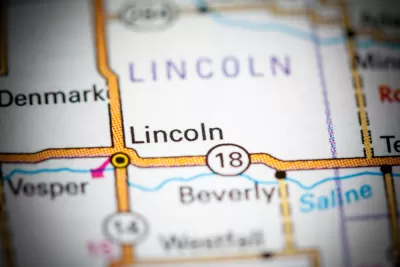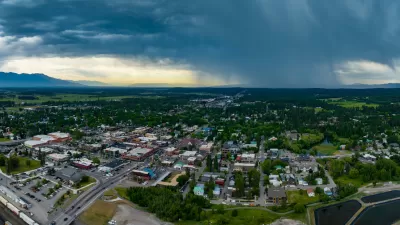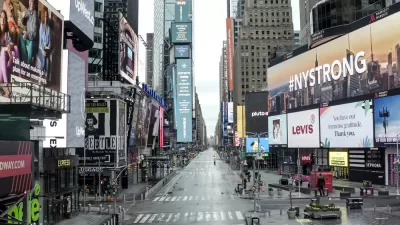Cities on the Great Plains were giving away land in recent decades in the hopes of attracting new residents. Now they have a different challenge: responding to a sudden, but still modest, spike in demand.

Mark Dent reports for the Hustle on the latest turn of the screw in the "boom and bust of the Great Plains."
Dent starts his history from the forced removal of Native Americans and the 1862 Homestead Act to a long period of population decline and, finally, a nascent episode of rebirth: "After a year of soaring real estate prices in every city and suburb, long-depressed and depopulated Kansas is going through a lower-key real estate boom of its own."
Since the 1990s, many Kansas towns have pursued a contemporary version of the Homestead Act, offering land for free to "anyone willing to move in and build a house," according to Dent. In 2003, for instance, the city of Marquette offered about 60 free lots to entice new residents, and sparked media interest from the Hutchinson News, the Associated Press, and the CBS Evening News. Almost 30 Kansas towns have launched free land programs—but only a few have managed to stop population decline, reports Dent.
The story's foray into the pandemic years centers mostly around the city of Lincoln, where "houses that used to sit on the market for a year were selling within weeks in 2021," writes Dent.
Now cities that once pulled out every trick in the book to attract demand are preparing to meet a new challenge: more demand than anticipated.
The deeply reported source article, linked below, includes a lot more human interest and local economic data and examines the question of whether the demographic shifts of the pandemic are narrowing the gap between the rural and the urban.
FULL STORY: Would you take free land in rural America?

Study: Maui’s Plan to Convert Vacation Rentals to Long-Term Housing Could Cause Nearly $1 Billion Economic Loss
The plan would reduce visitor accommodation by 25,% resulting in 1,900 jobs lost.

North Texas Transit Leaders Tout Benefits of TOD for Growing Region
At a summit focused on transit-oriented development, policymakers discussed how North Texas’ expanded light rail system can serve as a tool for economic growth.

Why Should We Subsidize Public Transportation?
Many public transit agencies face financial stress due to rising costs, declining fare revenue, and declining subsidies. Transit advocates must provide a strong business case for increasing public transit funding.

How to Make US Trains Faster
Changes to boarding platforms and a switch to electric trains could improve U.S. passenger rail service without the added cost of high-speed rail.

Columbia’s Revitalized ‘Loop’ Is a Hub for Local Entrepreneurs
A focus on small businesses is helping a commercial corridor in Columbia, Missouri thrive.

Invasive Insect Threatens Minnesota’s Ash Forests
The Emerald Ash Borer is a rapidly spreading invasive pest threatening Minnesota’s ash trees, and homeowners are encouraged to plant diverse replacement species, avoid moving ash firewood, and monitor for signs of infestation.
Urban Design for Planners 1: Software Tools
This six-course series explores essential urban design concepts using open source software and equips planners with the tools they need to participate fully in the urban design process.
Planning for Universal Design
Learn the tools for implementing Universal Design in planning regulations.
Ascent Environmental
Borough of Carlisle
Institute for Housing and Urban Development Studies (IHS)
City of Grandview
Harvard GSD Executive Education
Toledo-Lucas County Plan Commissions
Salt Lake City
NYU Wagner Graduate School of Public Service





























